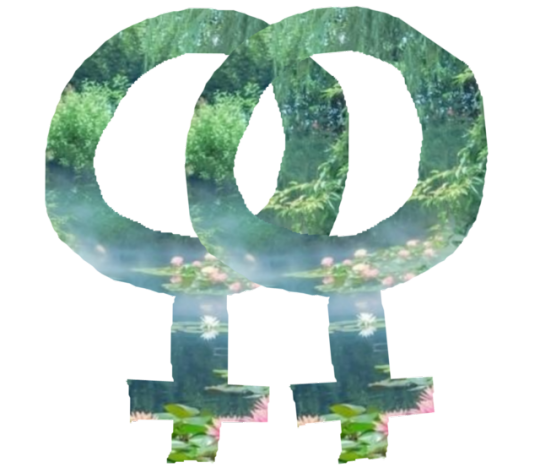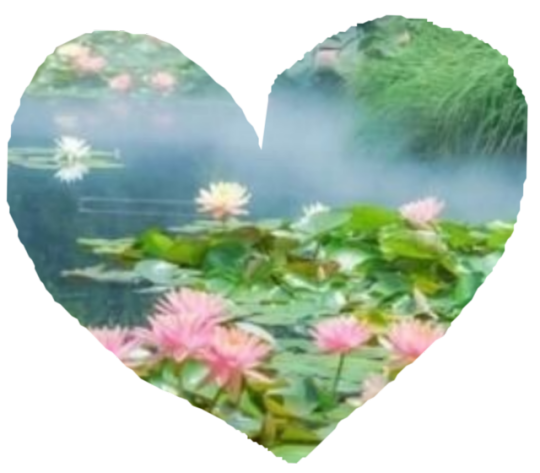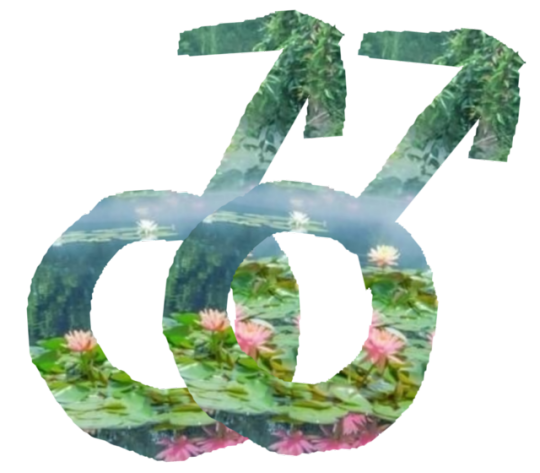Text

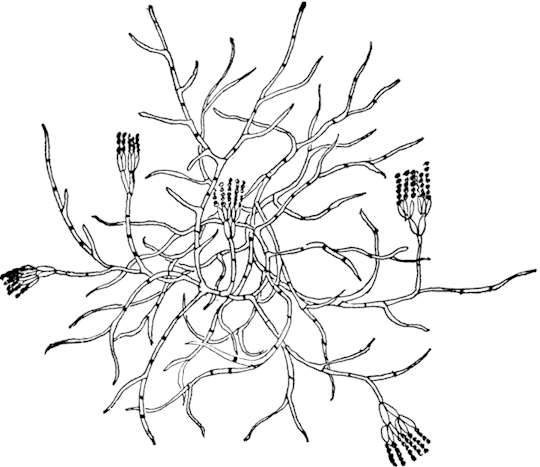

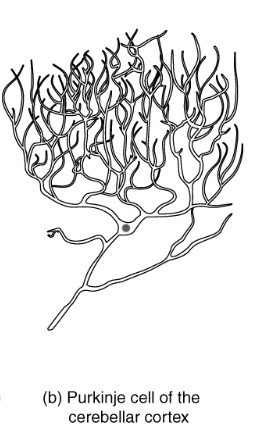
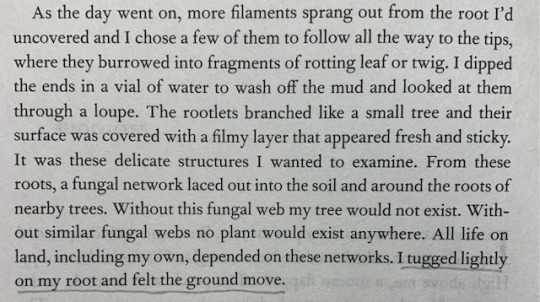




Cave Networks, Fungi, and What it Means to be Alive
“Fear of Depths” by Jacob Geller // Illustration of green mold by Carlton C. Curtis, “Nature and Development of Plants” // YouTube comment by The Florida Man // Illustration of a neuron, from “Neurons and glial cells” // Merlin Sheldrake, “Entangled Life” // map of Mammoth Cave H.C. Hovey // YouTube comment by Lorenzo Pachecho // Illustration of grass roots by Mohamed El Mazlouzi // Merlin Sheldrake, “Entangled Life”
11K notes
·
View notes
Text
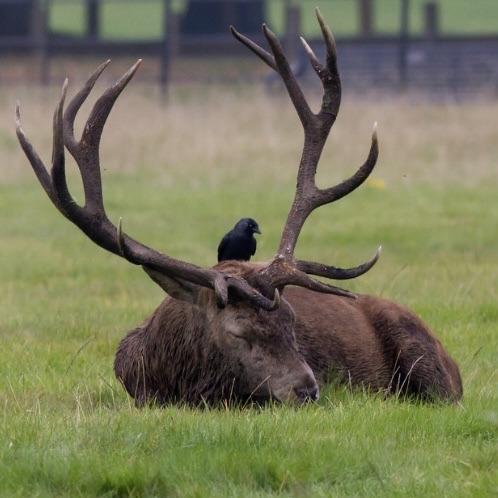

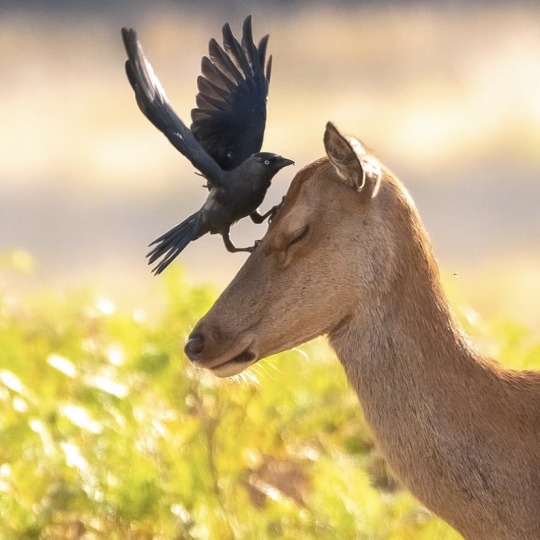
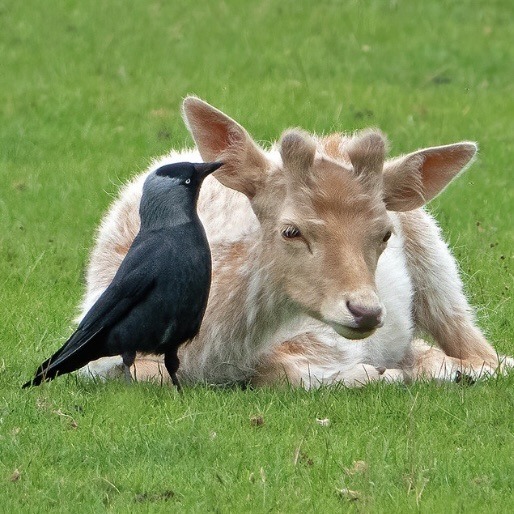
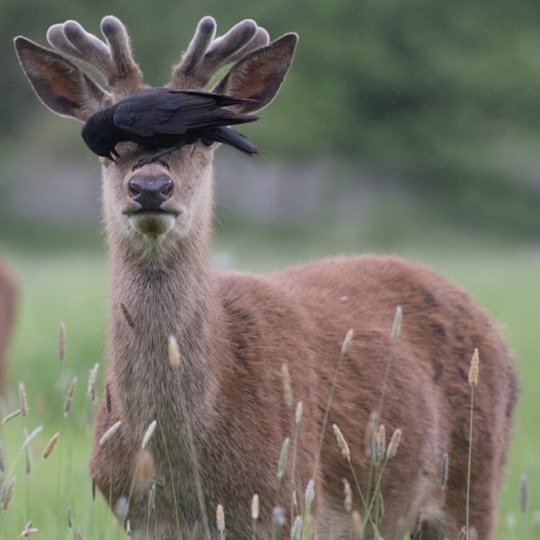
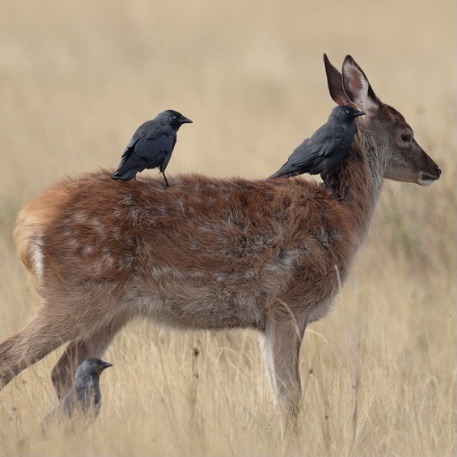

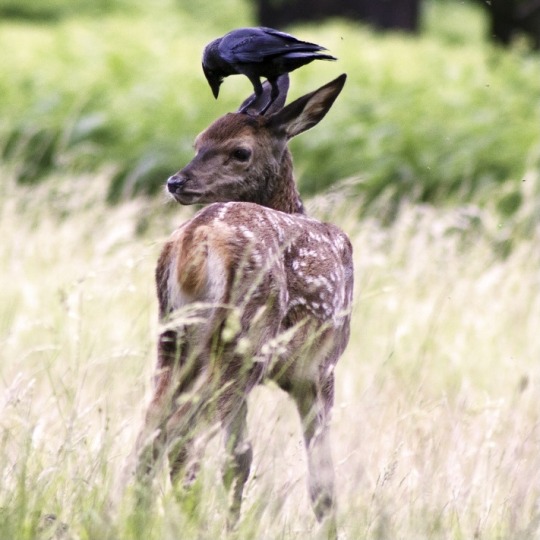
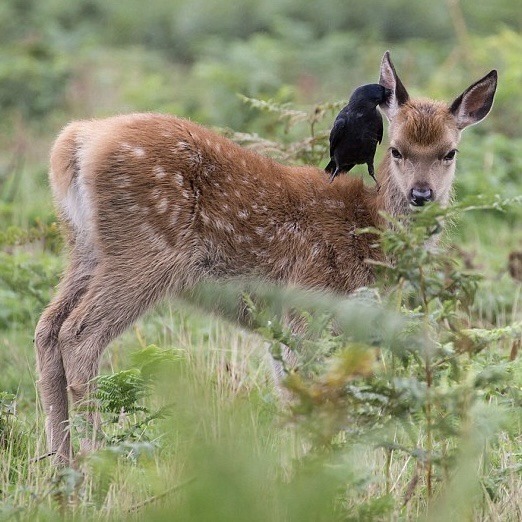
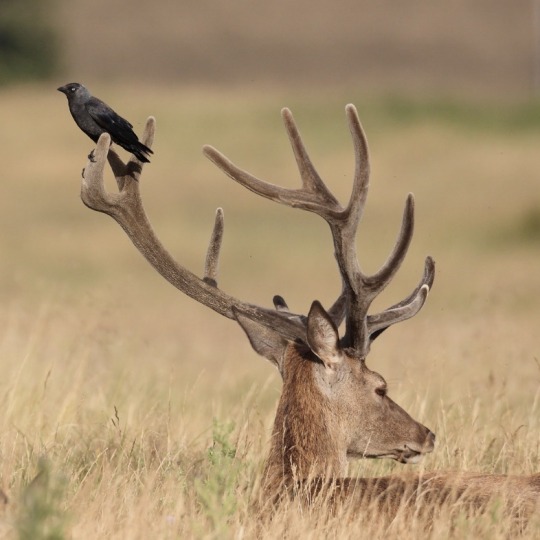
Deer and jackdaws.
The birds feed on ticks from the deer, and also assist in removing velvet from growing antlers.
26K notes
·
View notes
Text
ive been reading a book that basically explains how so-called “brain differences” between the genders is the result of gendered socialization and not the cause of it. i honestly expected the book to be very cis-centric but its actually the opposite, the author stresses that testimony from trans ppl is actually indispensable because we’ve, in a sense, “lived both experiences”
more cis feminists should have this mindset
238K notes
·
View notes
Text
so apparently “asexual reproduction” is no longer the preferred scientific term, so if anyone makes a sponge joke or whatever just scream “IT’S AGAMETIC KNOW YOUR SCIENCE” and throw a textbook at them
57K notes
·
View notes
Video
Source is SHARKEEE ON TWITTER who posts tons of original amazing wildlife shots and videos but I needed to show you what lamprey look like mating, you won’t regret it especially not when one of them is still so worked up it starts swinging a boulder around with its face
10K notes
·
View notes
Text
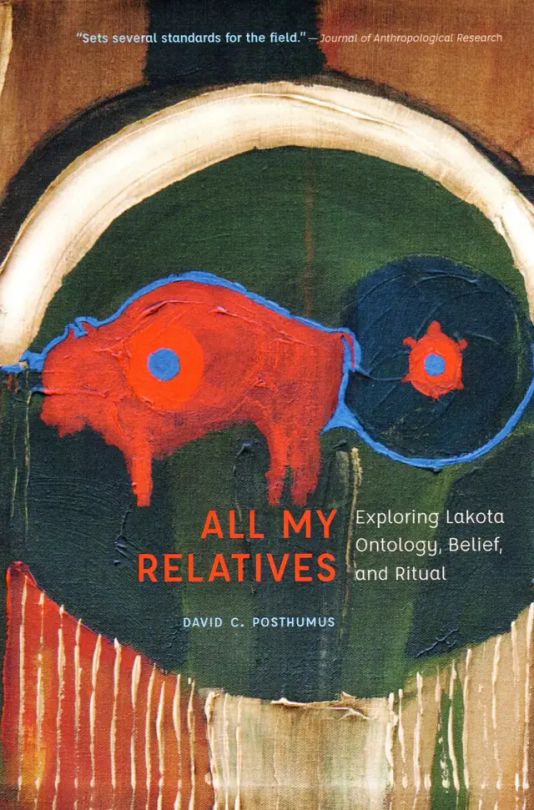

All my relatives: Exploring Lakota ontology, belief, and ritual. Posthumus DC (2022)
This is a book all about Lakota traditional beliefs and therefore has a lot of information connected to Mitakuye Oyasin. “At the heart of both Lakota religious continuity and innovation is an underlying animist ontological orientation, a basic way of seeing, understanding, and being in the world that extends personhood— in the form of a soul or spirit— to nonhuman life- forms.” This is expressed with ‘Mitakuye Oyasin’ –meaning ‘all my relatives’ or ‘we are all related’, which refers not only to human kinship but also to the relationship shared by all life-forms, both human and nonhuman, and the reciprocal obligations, responsibilities, and mutual respect that naturally extend from it” (14).
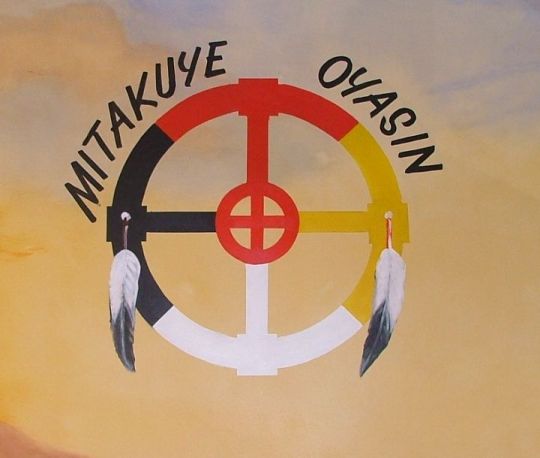
This repeats much of the ideas from similar definitions: belief in the connection between all life, relationships, the power the phrase has. It also gives a lot of words to help define these beliefs in academic language. Another important thing to point out is the way mitakuye oyasin is recognized as being part of Lakota innovation; my goal here is to use mitakuye oyasin to an innovation of queer ecology–hopefully add to the conversation.
“The normative cultural values encompassed by mitákuye oyásʾį are the very foundation of kinship, relational ontology, and the overarching interspecies collective, of which humans are only one hoop, one oyáte ‘people, nation, tribe’, in the company of many others. The key constituents of this animist ontology and worldview, of mitákuye oyásʾį, are persons, a category that extends beyond human beings to nonhuman or other- than- human persons. [...] Importantly, the Lakota worldview sees humans as the least knowledgeable and powerful beings, requiring the most aid and pity, upending the common Western biblical assumption that humans have dominion to rule over all other life- forms and subdue the earth (see V. Deloria 1999, 50; 2009, 99– 100). For the Lakotas, the seed of all life is wakʿą ‘sacrality, mystery, divinity’; ́ hence all life- forms share a generalized interiority, whether human or nonhuman.”

This is important information to support my argument. Queer ecology is very critical of Western beliefs and dichotomies that separate humans from nature and thereby present mankind as the ultimate lifeform (anthropocentrism). There are many essays and articles that examine the influence Christianity has had on the colonialist project (Gaard is the first that comes to mind). The Lakota worldview of being the ‘younger siblings’ of creation are supported by science in that ‘humans’ as a 'species' haven’t existed all that long in comparison to other 'species' and like many indigenous cultures, Lakota people knew the key to knowing nature was to learn from the world around us, as the author later confirms:
“Deloria explains that “the oldest traditions say that humans learned politeness and courtesy from the animals. . . . Generations of elders had already observed the behavior of birds . . . and decided that emulating them was the proper way for humans to act” (V. Deloria 2009, 123). Standing Bear (2006a, 56) substantiates this, writing, “The Lakota enjoyed his association with the animal world. For centuries he derived nothing but good from animal creatures. From them were learned lessons in industry, fidelity, and many virtues and much knowledge.” (50-51)
In the author’s footnotes is Vine Deloria’s examination of mitakuye oyasin that is, I feel, a great support of my claim:
“Vine Deloria refers to mitákuye oyásʾį as the ‘Indian principle of interpretation/observation,’ calling it “a practical methodological tool for investigating the natural world and drawing conclusions about it that can serve as guides for understanding nature and living comfortably within it. . . . We observe the natural world by looking for relationships between various things in it. . . . This concept is simply the relativity concept as applied to a universe that people experience as alive and not as dead or inert” (1999, 34). (Posthumus 2022 p219 f)
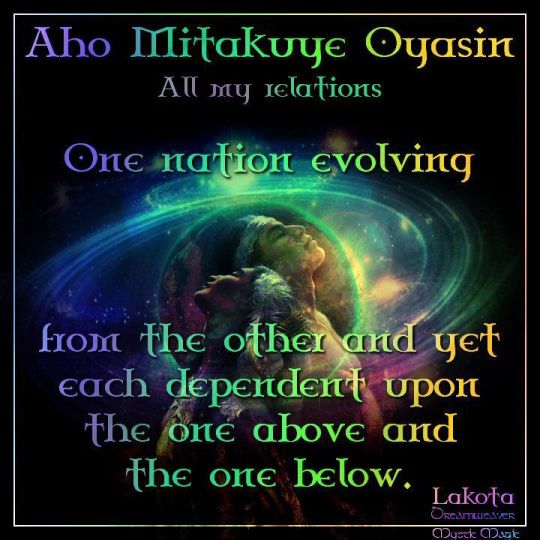
Queer ecology’s goal in many ways is to critique the ways the Western scientific paradigm has created inequity. Many are seemingly searching for solutions and answers to the problems that have been perpetuated by the colonial empire, supported as it is by western science.
While we must always, always be careful of appropriation and misappropriation–I contend that the solutions are not ones that need to be ‘discovered’ or solved in the way that Western science is so often searching for–advancement, the future…but rather, the answers are in what has always been there…and it’s simply a matter of observation.
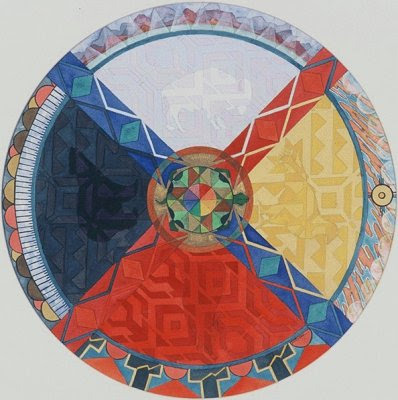
#queer ecology#mitakuye oyasin#queer theory#ecofeminism#critical ecology#colonialism#all my relatives#lakota#indigenous studies#postcolonial theory#ecology#science#traditional ecological knowledge#queering ecology#ecosystems#environment#social ecology#long post
22 notes
·
View notes
Text

Mitákuye Oyás’iŋ. Tapestry Institute. https://tapestryinstitute.org/mitakuye-oyasin/. Referencing Sicungu Lakota Elder Albert White Hat.
Their website defines itself thusly: Tapestry Institute weaves Indigenous Knowledge to life through activities and publications that use Indigenous ways of knowing, learning about, and responding to the natural world. The particular post I am referencing is about the Lakota phrase ‘Mitakuye Oyasin’ (also spelled as Mitákuye Oyás’iŋ, mitákuye oyásʾį). “The Lakota phrase Mitákuye Oyás’iŋ describes Reality by addressing it as “All My Relations.” All humans, all animals, all plants, all the waters, the soil, the stones, the mountains, the grasslands, the winds, the clouds and storms, the sun and moon, stars and planets are our relations and are relations to one another. We are connected to each other in multiple and vital ways. When one is in pain, all are harmed. When there is justice for one, there is more justice for all.”
This quote is important as it confirms the idea that ‘Mitakyue Oyasin’ is more than merely a meaningful phrase, but is a way of describing Reality. It also helps describe the sheer scope of what the words mean. What is also important to recognize is the belief in pain and justice also being interconnected as this can be connected to feminist ideas expressed within much queer ecology. But, the post also emphasizes that even though ‘All our Relations’ is the most common translation of the words, “the phrase actually bears within it rich layers of additional meaning that cannot be easily translated into English. It’s important to point this out because words and ideas, stories and rituals, are bound together into a single reality that must be respected, not misappropriated”.
youtube
Finally, the video interview with Albert White Hat adds even more complexity: the wisdom in these words are not “merely a collection of historical ideas or words” but “ a system of powerful knowledge applicable to the lives and struggles of people right now”. This ultimately supports my thesis; that indigenous worldviews (in this case, Mitakuye Oyasin) can be in symbiosis/symbiopoesis with queer ecology--the concept is a tool (a much more besides) that can be applied to the struggle we face in healing our planet.
-- Symbiosis is any type of a close and long-term biological interaction between two biological organisms of different species
-- ‘Symbiopoesis’ or “how organisms can be intimately involved in each other’s development” (squid and light emitting bacteria, bees and pollination, acacia trees and ants, wasps and figs). (Rahder)
#queer ecology#tapestry institute#critical ecology#indigenous people#traditional ecological knowledge#mitakuye oyasin#symbiosis#symbiopoiesis#ecofeminism#queer theory#environmental politics#ecology#colonialism#Youtube
9 notes
·
View notes
Photo

Teagan White ON TUMBLR
EVERYTHING IS A CYCLE
263 notes
·
View notes
Text

Chapter 13. Biophilia, Creative Involution, and the Ecological Future of Queer Desire by Dianne Chisholm
Our essence as a species binds us to explore and affiliate with all life. We are lovers who can add up glucose, amino acids, water, fragrant oils, pigments, and other issue and call it both a flower and a mystical gesture. We can also decimate pollinators with an unloving tonnage of pesticides, precipitating the extinction of entire populations of those mystical gestures, once and forever. Lives without access to sensations are lives that edge out the earth’s raw, pervasive sweetness, that deeply biophilic connection to all life. –Ellen Meloy
Biophilia can be a mindful reverence for the infinity of organic sexual-social order; a love for the diversity of non-human life that stirs the mind to infinity for the beneficial enlightenment of humanity
Biophilia can be an earthy curiosity for the erotic vitality with which life affects fidelity to extreme geography; an erotic-ethical affiliation between humans and nonhuman life in experimental symbioses whose ecological benefits are sensed and desired, if not fully cognizable (360)
Biophilia, Episemophilia, Cognitive Adventuring
What do nature writers want?; nature writers desire to know what nature desires (361)
“What does a prickly pear cactus desire that couples it so tenaciously to bare basalt sandstone with a sexual rhythm that erratically keeps pace with drought and flash flood? What conjunction of organic and inorganic elements add up to such a thriving, if exotic, symbiotic assemblage?
the ‘intercourse’ that can develop is not zoophilic bestiality nor anthropomorphic romancing; rather it is a transmutation of human being into something other, prompted by the closeness of the human body to the vibrating heat and rhythms of the animal pack (361)

‘Becoming-other-than-human’; by being so close to animals (in this case big horn sheep) Ellen Meloy becomes caught up in the pack's migrations and affections in an other dimension of belonging to place. She senses an otherworld with de-familiarized, or deterritorialized human sensibility—a sensibility pushed to the limit of being human on the threshold of becoming other and she wishes to “bring back their startling news” to the human side, where human knowledge of the nonhuman can be put to mutually beneficial work.
The human mind evolve(s/d) in contact with animal life (Meloy). Children playacting the animal; children are drawn to animals, animating the senses, connecting and communicating with others, to explore and affiliate with nonhuman lifeforms.
“Touched by indigenous life to the desert heartland, Meloy allies herself with native nature/culture and she foregrounds and reconnects pre- and post-colonial territorial practices” (372)
“To Touch an Otherworld”:Biophilic Ethics
Species interdependence is the name of the worlding game on earth, and that game must be one of response and respect…Queer messmates in mortal play, indeed.—Donna J. Haraway
For humans to aid bighorn survival, it is crucial to understand the zoogenic factor (or the autopoiesis of animal life) in co-evolutionary ecology.
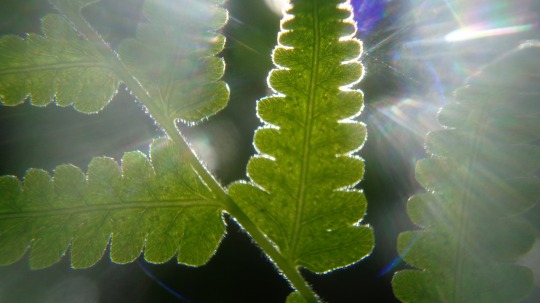
Synthesis weds symbiosis in a post-anthropocentric recovery of the wild—a becoming-animal of wildlife management that “runs contrary to the historical imperative to press everything alive, dead, or otherwise into human service” (307) (374)
Deleuze emphasizes the anti-utilitarian, communal ethics of becoming-animal. “it is no longer a matter of utilizations or captures, but of sociabilites and communities” (1988, 126) (375)
Human alliances with wild animals that do not only protect animal territoriality but also promote animal-earth symbiosis. How can human interference proceed while respecting and/or preserving the other’s own relations and world? (375)
The Ecological Future of Queer Desire
“Opponents to native fish recovery programs…measure worth as most of us do, by human ego. What good are these fish? You can’t eat them, they appear to have no medical, economic, sport, or industrial value…even their file drawer in the wildlife management bureaucracy ---“nongame”---assigns them not their own innate something but that which they are not: not sport, not food. These fish, many people believe, are dead-end. Tertiary detritus with strange humps, and weird lips. They are just too queer….what does a humpback chub want?” ---Ellen Meloy

Rejects the ‘survival of the fittest’ in favor of cyborg syntheses and unnatural symbiosis (survival of the queerest?)—sexual selection that refines and perfects the family tree
‘sexuality is badly explained by the binary organization of the sexes, and just as badly by a bisexual organization within each sex. Sexuality brings into play too great a diversity of conjugated becomings; they are like n sexes, an entire war machine through which love passes” (Deleuze and Guttari 1987, 278) (375-6)
“Only queers can battle an imperative that unites Left and Right, thereby neutralizing domestic politics” (Lee Edelman, 2004)
“A better science and monitoring is required if variants are to be identified as sympatric (species that cohabit the same region, which do not usually interbreed but which do hybridize naturally, if rarely) or extrinsic (hybridization due to human civilization). More than improved technology , it takes devotion to distinguish variations that signal either adaptive evolution or “the last-ditch, high-pitched shriek of preextinction”. For life’s sake—or more precisely, for life for life’s sake—our biophilia is put to the ultimate test. (379)
#queer ecologies: sex nature politics desire#queer ecology#critical ecology#queer theory#ecofeminism#environmental politics#ecology#biophilia#nature#love of nature#endangered species#animals#species#extinction#colonialism
3 notes
·
View notes
Text

Chap 12. Melancholy Natures, Queer Ecologies by Catriona Mortimer-Sandilands (part 3, final)
Queer Ecologies
‘what it might mean to inhabit the natural world having been transformed by the experience of its loss’?
‘[the queer artist's] natures are not saved wildernesses; they are wrecks, barrens, cutovers, nuclear power plants: unlikely refuges and impossible gardens. But they are also sites for extraordinary reflection on life, beauty, and community’ (344)
AIDS and Other Clear-Cuts
The artist (Jan Zita Grover’s North Enough) writes about moving from San Francisco, where she has worked as a personal caregiver to many individuals who were dying, and died of, AIDS, eventually to the woods of Northern Wisconsin and Minnesota hoping for ‘a geographic cure’ to her burnout and grief. (344)
‘in their persistence [grief, mourning], generate a form of imagination—an awareness of the persistence of loss—that allows her to conceive of the natural world around her in ways that challenge the logic of commodity substitution characterizing contemporary relations of nature consumption” (344)
“The north woods did not provide me with a geographic cure. But they did something much finer. Instead of ready-made solutions, they offered me an unanticipated challenge, a spiritual discipline: to appreciate them, I needed to learn how to see their scars, defacement, and artificiality and then beyond those to their strengths—their historicity, the difficult beauties that underlay their deformity. AIDS, I believe, prepared me to perform these imaginative feats. In learning to know and love the north woods, not as they are fancied but as they are, I discovered the lessons that AIDS had taught me and became grateful for them” (344)
Rather than the landscape of her dreams, the land looks more like a candidate for reclamation. Through Grover’s research we learn that the region is one that been ‘systematically abused: logged several times, drained, subjected to failed attempts at agriculture, depleted, abandoned, eroded, invaded, neglected.”

Jack pines are predominant in the region; tenacious, ‘the first conifers to reestablish themselves after a fire” (16), in their own way remarkable even as they are useless for lumber, short lived, and not at all the sorts of trees about which adjectives like ‘breathtaking’ circulate” (345) they are a loud testament to the violence that has generated them.
“the diminishment of this landscape mortified and disciplined me. Its scars will outlast me, bearing witness for decades beyond my death to the damage done here” (20) But still: the love emerges, painfully, gradually, intimately. (345)
She experiences the landscape in terms of loss and change, rather than idyll and replacement. It is all personal; it is all about developing a way of making meaning that recognizes the singularities of the past and takes responsibility for the future in the midst of intimate devastation. (345)
‘Environmental hubris’—fly fishing, the introduction of non-native fish to the river, changing temperatures of rivers caused by logging and diversion; specific policies, politics, and technologies that have had effects on the rivers, the fish, and the other species throughout the river and the north woods (356)
A refusal to demonize the ‘invasive’ species; Grover herself is ‘invasive’ both culturally and personally (white settlers and big city imports) thus her ethical claim is not for purity but for an active and thoughtful remembering of historical violences in the midst of ongoing necessity of movement and change (346)
Seek relationships with Clear-cuts and landfills in order to bring to the foreground the massive weight of human devastation of the natural world; “a discerning eye can see how unstewarded most of this land has been. The charm lies in finding ways to love with such loss and pull from it what beauties remain” (81) (347)
“she does not romanticize the dying even as she might mourn their loss to the world; instead [through Grover] we witness each loss as particular, irrevocable, and concrete: she is their witness” (347)
Can we learn to see these landscapes as creation as well as destruction?
Rather than mourn the loss of the pristine, she carefully cultivates an attitude of appreciation of what lies before her, beyond the aesthetic wilderness to the intricate details of human interactions with the species and landscapes of the region. In this manner she comes to be able to find the beauty in, for example, landfills and clearcuts; far from naivete or technophilia, this ability is grounded in a commitment to recognizing the simultaneity of death and life in these landscapes, the glut of aspen-loving birds in the clear-cut, the swallows, turkey vultures, and bald eagles near the landfill.
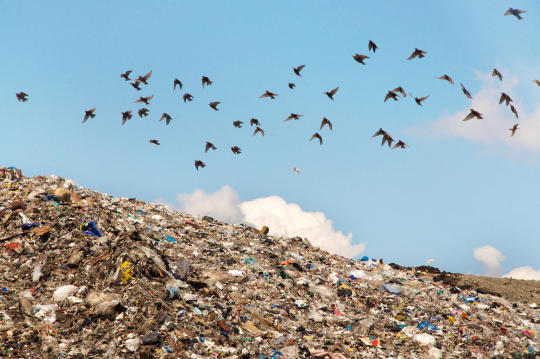
--
It is necessary to face our fear and pain; we have to make room in our relationships with the natural world, queer and otherwise, for the recognition that that is what we might be feeling in the first place (355)
#queer ecologies: sex nature politics desire#queer ecology#queer theory#ecofeminism#critical ecology#environmental politics#ecology#aids crisis#mourning nature#ecogrief#colonialism#environmental degradation#melancholia#queer politics#melancholy#environmentalism#climate and environment#environmental justice#forests
47 notes
·
View notes
Text


Chap 12. Melancholy Natures, Queer Ecologies by Catriona Mortimer-Sandilands (part 2)
Mourning and Melancholia
(1915 essay by the same name by Sigmund Freud); mourning and melancholia are reactions to the loss of a beloved object: “both are grave departures from the normal attitude of life” (1984, 252) but with mourning “we rely on its being overcome after a certain lapse of time” (225) in melancholia the ego will not let go, the melancholic internalizes the lost object as a way of preserving it. (334) A loss has occurred, “but one cannot see clearly what it is that has been lost, and it is all the more reasonable to suppose that the patient cannot consciously perceive what he has lost either” (254)(335)
Mourning is thus a process of recognition of beauty as well as an acknowledgement of its extinguishment (things are beautiful because they die) (336)
Melancholy Nature
Ecotourism, wilderness tourist practices are a form of ecosocial ritual by which consumers of ‘vanishing’ nature confirm their own transcendence of nature in the moment of mourning its loss: by understanding nature as something ‘lost’ at the hands of modernity, and by witnessing its demise in the fetishized chunks that are offered up to spectacular consumption by modernity, the victory of the modernity responsible for the loss is confirmed (337)
The temporal logic of this (bourgeois) progressivist narrative is very akin to Freud’s: the position of the present as ‘better’ than the past is achieved through an understanding of loss that assumes the libido will simply ‘move on’, and that also, in this case, assumes that modernity will simply move on from nature even as it memorializes its legacy in parks and monuments (337)
Fetishization and commodification of a lost, romanticized nature—“unspoiled” wilderness—is very important; it is the very quality of nature’s impending extinguishment (buy now or you’ll miss it) that fuels much ecotourism (337)
“Nature” becomes mythic, idyllic, a commodity, a fantasy, a fetish that can be bought to extend the reach of capital rather than critique the relationships that produced the loss in the first place. The idea of a pristine nature on the perpetual verge of destruction is not only a violent rationale for the dispossession of peoples and livelihoods but a seductive fantasy that keeps consumers poised to watch that destruction. (337)
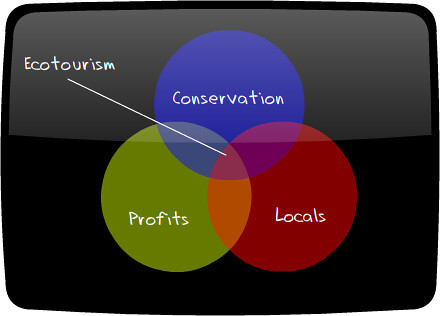
Nature as a fantastic, watchable visitable commodity is a part of modernity (338); the consumption of nature as wilderness is an imposition of one hegemonic relationship—capitalist exchange—into a landscape of many other relationships and intimacies, relationships that are often destroyed in a process of consumption itself. crucially, the fantasy of wilderness is not only infinitely consumable, but infinitely replaceable.
There is lots of evidence of environmental loss but few places in which to experience it as loss, to even begin to consider that the diminishment of life that surrounds us on a daily basis is something to be really sad about, and on a personal level. Non-human beings and particular life filled places are, here, ungrievable in the same moment that their loss (or impending loss) propels their value on the market (338-339)
How does one grieve in a context in which the significance, the density, and even the existence of loss is unrecognized?
Melancholia, pressed into the service of memory—environmental loss becomes something recognizable and meaningful—and grievable

Queer Melancholia
Mourning is a process of accepting that by the loss one undergoes one will be changed, possibly forever (Butler 2004, 21) (340)
Melancholia is a productive response to the twentieth century’s “catastrophic losses of bodies, spaces, and ideals, [and that] psychic and material practices of loss and its remains are productive for history and for politics” (5) (340)
Melancholia suggests a non-normalizing relationship to the past and the world, in which the recognition of the identificatory persistence of loss in the present—loss as self, the fact that we are constituted by prohibition, power, and violence—is central to our ethical and political relationships with others.
Butler writes; grief furnishes a sense of political community…by bringing to the fore the relational ties that have implications for theorizing fundamental dependency and ethical responsibility (2004, 22) (341)
The author makes direct connections to queer activism especially surrounding the AIDS crisis and the catastrophic losses experienced.

“The numbers of deaths are unthinkable’ but ‘the rest of society offers little or no acknowledgment” ; is it not surprising that gay men feel “frustration, anger, rage, outrage, anxiety, fear, and terror, shame and guilt, sadness and despair” but rather that “we often don’t” (Douglas Crimp) Crimp believed that the failure of activism to acknowledge the fact that AIDS is bound up with internal violence as well as external is itself a form of disavowal; “by making all violence external, pushing it to the outside and objectifying it in ‘enemy’ institutions, and individuals, we deny its psychic articulation, deny that we are effected, as well as affected, by it”; Mourning is a vital companion to organizing and melancholia a part of the politics of AIDS. (341)
Cvetkovich; the collective preservation of loss is an ‘archive of trauma’—[…]suggests the acknowledgement of melancholia as a public activity; public melancholy as a form of survival (342)
What might it mean to consider the preservation of a public record of environmental loss, an “archive of ecological trauma”—made up of the kinds of art, literature, film, ritual, performance and other memorials and interrogations that have characterized so many cultural responses to AIDS—as part of an environmental ethics of politics?
What would it mean to consider seriously the environmental present, in explicit contrast to dominant discourses of ecological modernization, as a pile of environmental wreckage, constituted and haunted by multiple, personal, and deeply traumatic losses rather than as a position from which to celebrate their demise by consuming them (and moving on to something else)?
What might it look like to take seriously the fact that nature is currently ungrievable, and that the melancholy natures with which we are surrounded are a desperate attempt to hold onto something that we don’t even know how to talk about grieving? (342)
#queer ecologies: sex nature politics desire#queer ecology#queer theory#melancholia#melancholy#mourning#mourning for nature#ecogrief#aids crisis#queer politics#queer history#grieving#critical ecology#ecofeminism#environmental politics#ecology#loss#queer melancholia
5 notes
·
View notes
Text
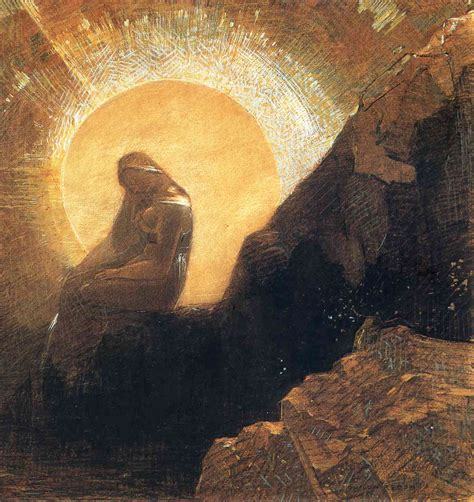
Chap 12. Melancholy Natures, Queer Ecologies by Catriona Mortimer-Sandilands [part 1]
“One of the penalties of an ecological education is that one lives alone in a world of wounds.”—Aldo Leopold
“At the heart of the modern age is a core of grief. At some level, we’re aware that something terrible is happening, that we humans are laying waste to our natural inheritance. A great sorrow arises as we witness the changes in our atmosphere, the waste of resources and the consequent pollution, the ongoing deforestation and destruction of fisheries, the rapidly spreading deserts, and the mass extinction of species.”(331)
The author believes that this ‘core of grief’ is melancholia, a state of suspended mourning in which the object of loss if very real but psychically ‘ungrievable’ within the confines of a society that cannot acknowledge unhuman beings, natural environments, and ecological processes as appropriate objects for genuine grief (333)
“It is necessary to face our fear and our pain, and to go through the process of grieving, because the alternative is a sorrow deeper still: the loss of meaning. To live authentically in this time, we must allow ourselves to feel the magnitude of our human predicament” (332) (Anderson 2001, “The World is Dying—and So Are You”)
“Ecological grieving” vs “nature-nostalgia”
“was this [place] just the same sad story, the one about human violence, the endless damage we do, may always have done, to ourselves, everything around us? Yes, I thought, but that didn’t make it simple. I couldn’t even tell myself that if humans are violent and destructive, the natural world, at least, is peaceful and enduring, not while I lay with my back pressed tightly against the remnants of enormous volcanic explosions and the cold winter earth stole my own body’s warmth.” (Campbell 2003, 5)

“in late capitalism, nature-nostalgia—ecotourist pilgrimages to endangered wildernesses, documentaries of dying peoples and places, even environmentalist campaigns to ‘save’ particular habitats or species against the onslaught of development—are exactly a form of melancholy nature, in that they incorporate environmental destruction into the ongoing workings of commodity capitalism (333)
Grieving the ungrievable: how does one mourn in the midst of a culture that finds it almost impossible to recognize the value of what has been lost? (333)
Melancholia here is not a failed or inadequate mourning. Melancholia is a form of preservation of life—a life, unlike the one offered for sale in ecotourist spectacle, is already gone, but whose ghost propels a changed understanding of the present. (333)

[coming to love and understand devastated landscapes] transform […] melancholic attachments into a principles and public recognition of the ongoing loss of nature, and also of the ways in which that loss is constitutive of their environmental relationships on a daily basis… (334) and thus point us towards a queer ecology that both emerges from and politicizes melancholy natures, incorporating the experiences of a “world of wounds” into an ethical stance that resists, rather than fostering, fetish (334)
#queer ecology#melancholia#critical ecology#environmental politics#queer ecologies: sex nature politics desire#nature nostalgia#capitalism#ecotourism#ecogrief#queer theory#ecofeminism#mourning for nature#mourning#ecology#queer history
8 notes
·
View notes
Text

from "gender outlaws: the next generation"
image transcript:
Let me break it down this way: some lesbians and gays feel that their issues are more important than transgender issues, because transgender people are freaks. Some transgender people—often, but not only, transsexuals—view transsexual issues as more important than the issues of, say, cross-dressers. Some among the more genderqueer portions of our community look down upon those who opt to live in a more “normatively gendered” space. There are even groups that cross-dressers feel superior to: sissies, drag kings and queens, “little girls,” and so on. Yes, I’m sure that we could follow even each of these groups and find that, eventually, everyone has someone they view as a freak.
This is a human phenomenon, and one which occurs especially, it seems, among marginalized groups. Trekkers versus trekkies versus people in Klingon costumes, or furries versus fursuiters versus, oh, plushies. I’m sure if I looked at model railroaders, I’d probably find that HO gauge fans look down at N scale, or something like that. The taxonomies are endless, often circular, and are usually graded to a fineness that would be invisible to any outsider. We just want to identify the “real” freaks, so we can feel closer to normal. In reality, not a single one of us is so magically normative as to claim the right to separate out the freaks from everyone else. We are all freaks to someone. Maybe even—if we’re honest—to ourselves.
6K notes
·
View notes
Text
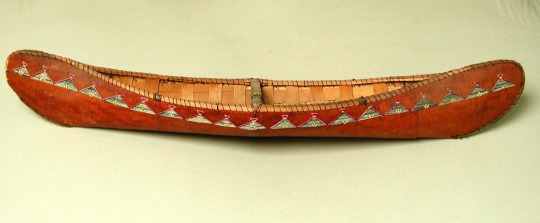
Chapter 11. ‘fucking close to water’: queering the production of the nation by Bruce Erickson (part 2, final)
Land
First ‘canoe’ that European colonists saw were likely Mi’kmaq gwitnn, birchbark boats designed for both ocean and river travel (318)
The colonist’s name is mentioned but the natives in these stories don’t ever get their names so…the colonist realized that to go further inland he would need the gwitn, he needed “the boat derived of the landscape realities of the new world” (Raffan 1999a, 24) (318)
the ‘canoe’ as a symbol unique to Canada (Jennings 1991, 1) (319), reworks essentialized aspects of indigenous cultures into a symbol of national health and success” (319) and as a “gift” from natives to settlers. The canoe as unique entity, because of the exploration done by canoe, the canoe is the guard that maintains the boundary of Canadian identity.
A vague connection could be made to the American symbol of the cowboy to the American west except the canoe is more ‘natural’ for being of the land and from the native people and further substantiated in its uniqueness by its use in colonialism.
Canada as a nation has ‘perfected’ the canoe; the only way the canoe can be made perfect is through its ability to be incorporated into European expansion (320) the connection of the land to the canoe as a discourse of inevitability illustrates the privileging of the European subject as the natural inheritors (indeed, the rightful inheritor) of First Nations land…and implicitly heterosexual and patriarchal subject (320-321)
Possibility
“We cannot possibly anticipate what might happen, if we were really to consider the ten million bodies at the bottom of the Atlantic Ocean "(Shannon Winnubst, 190) (324)

“Rethinking nature that is not bent toward the utility of power” (324) Opening ourselves to the possibilities of history means addressing the ways in which the ideologies and concrete practices that have formed our current understanding of nature represent more about the desired human outcome than they do about anything nonhuman (324)
Similar to really considering 10 million dead bodies in the Atlantic Ocean, this would mean really considering (as a broad list) the malicious wars over land and fur, the forced conversions, the repeated exposure to flu epidemics, the establishment of reservations and classification of First Nations as wards of the state, and the widespread physical and sexual abuse in residential schools designed to assimilate and civilize a supposed “savage” population” (324).

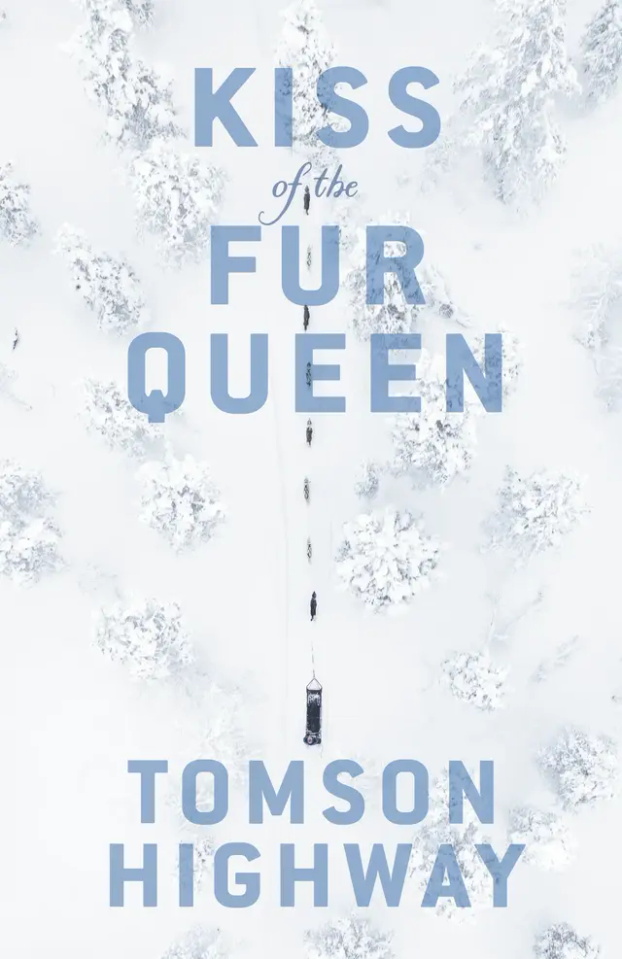
The Kiss of the Fur Queen is a novel by Tomson Highway, Cree playwright and novelist. Two Cree brothers are taken from their parents to a residential school several hundred miles away at the age of six, baptized into the Catholic church and have their names changed, they forbidden to speak their language and are abused by the priests of the school. They are alienated from their parents by the education and sexual predation of the school priests, but also are disconnected from the land, language and culture of their people…(the canoe plays a central role in the story, where difficult conversations about their alienation take place). As they grow up one of the brothers finds “continual inspiration” from the traditional Cree culture and discovered a “need to know the cultures that were suppressed by the residential school”. “As the crowd dances to the migisoo, the eagle, Gabriel realizes its power: ‘Gabriel saw people talking to the sky, the sky replying.” (Highway 1998) (324-326) (this is a poor summary, i apologize.)
“The movement between tradition and innovation is always fluid and uncharted” (327)
“Thus, while as a quirky national joke, the idea of making love in a canoe surely belongs to the post-sexual revolution of the later twentieth century, we need to remember that as a national symbol, the connection it strives to make between the canoe, nature, and nation signals a sexual politic that was born of the age of imperialism. “
“As Foucault reminds us, the legacy of the Victorian repression of sexuality is held within the resistance of the sexual revolution that fails to move outside the biopower networks of modern sexuality.” (327)
#queer ecologies: sex nature politics desire#colonialism#canada#biopower#first nations#foucault#canoes#canoeing#queer ecology#queer theory#environmental politics#heteronormativity#residential schools
3 notes
·
View notes

